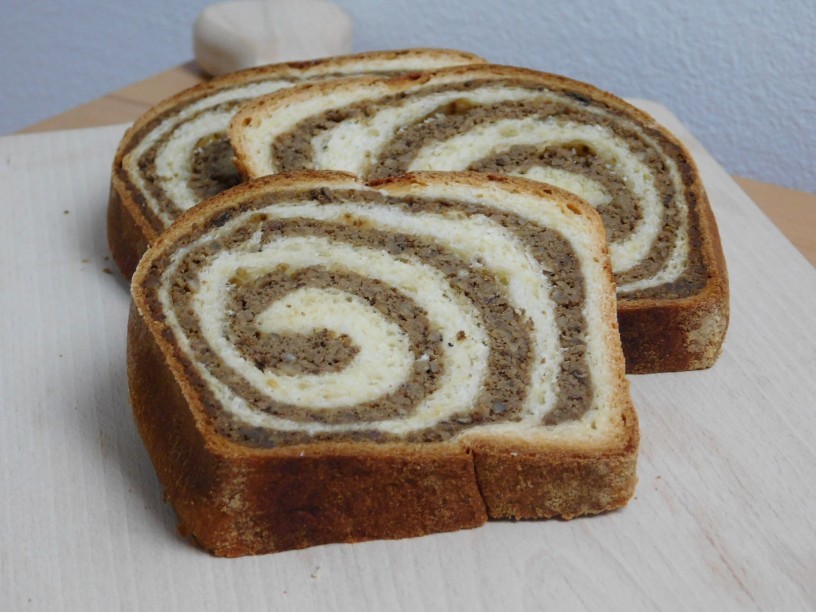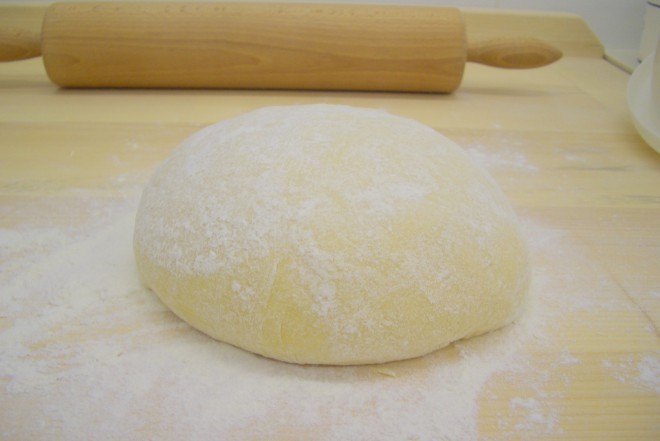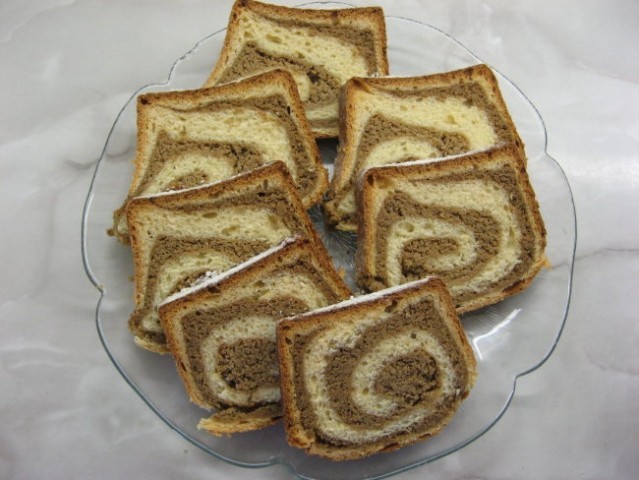Orehova potica
Orehova potica is a typical dish from my home country that people prepare for special occasions, whether it is Christmas, birthday, anniversary or anything else of even just a little importance. It could roughly be translated as ‘the walnut bread’ and I would like to share this recipe with you. Since I did not take any pictures while making orehova potica the last time, I selected some of the best photos from the internet, but I will update this recipe with my own pictures once I make this dessert again.

Looks delicious, doesn't it?
Ingredients
I divided the ingredients in two separate groups since the making of orehova potica consists of two different parts.
For the dough:
- 600 grams of all purpose flour
- 30 grams of yeast
- Two decilitres of milk (preferably skim milk, but whole milk will do just as well)
- 140 grams of sugar
- 140 grams of butter (alternatively, you can use canola oil)
- Four egg yolks
- One teaspoon of vanilla extract
- Lemon peel
For the filling:
- 400 grams of grinded walnuts
- Two decilitres of milk (same as above)
- 250 grams of sugar
- Two tablespoons of rum
- Two egg whites
Preparation
Mix yeast with a teaspoon of sugar, a teaspoon of all purpose flour and a few tablespoons of milk. Let it rise.
While the yeast mixture is rising, you can start making the filling for orehova potica. Put grinded walnuts and sugar in a medium sized bowl, add milk and rum and mix well. Let it rest for a few minutes. Mix the egg whites until they rise and become fluffy, then add them to the mix. Mix well. The filling should be spreadable, so not too thick, not too liquid. If you feel it is too liquid, add some more grinded walnuts, and if it is too thick, add more milk. You do not need to put the filling in the refrigerator, just leave it outside.
Then, it is time to make the dough. It could not be more simple - put all the ingredients in a large bowl, including the yeast, and mix well together. Let it rest for a few minutes, then roll it out, sprinkle some lemon peel on the top and spread the filling all over it. Then, roll it up, it is that simple. You can either just make a roll or join the ends together to make a full circle.

This is how the dough should look like.
But it is not time to eat orehova potica yet. Once you roll it up, cover it with a cloth and let it rise overnight. The anticipation always kills me, but you have no choice but to wait. Next morning, turn the oven on 180 degrees Celsius and bake the orehova potica for one hour to one hour and a half. The exact baking time depends on several factors. The easiest way to check when your orehova potica is done is to stick a toothpick in the middle, and if no dough is sticking to it, it is baked perfectly. And now the hardest part - you have to wait for the orehova potica to cool downso you can finally eat it. The best part is definitely biting the crunchy crust for the first time. Enjoy!

Swirly deliciousness.
Storage and serving suggestions
Orehova potica is pretty easy to store. When made, you can simply wrap it in aluminium foil and keep it wherever you keep the bread. You can also freeze it. My grandma usually makes five or six loaves of orehova potica at once and she simply puts them in the freezer - they are good for up to nine months this way. Needless to say, we usually eat it much earlier because it is just too delicious to let it sit in the freezer.

The thickness of the filling swirl depends on how you spread it. Some people prefer more filling, some people prefer less.
The most popular way to eat orehova potica is to just cut a slice and eat it. But I once experimented a little bit and put some Nutella on it - it tasted divine! Some people also serve orehova potica with honey whipped cream on the side. Personally, I prefer it plain or with Nutella on it - it is already flavourful enough. You can also sprinkle the crust with some powdered sugar.
Photo gallery
Content available in other languages
- Español: Orehova potica
Want to have your own Erasmus blog?
If you are experiencing living abroad, you're an avid traveller or want to promote the city where you live... create your own blog and share your adventures!
I want to create my Erasmus blog! →









Comments (0 comments)